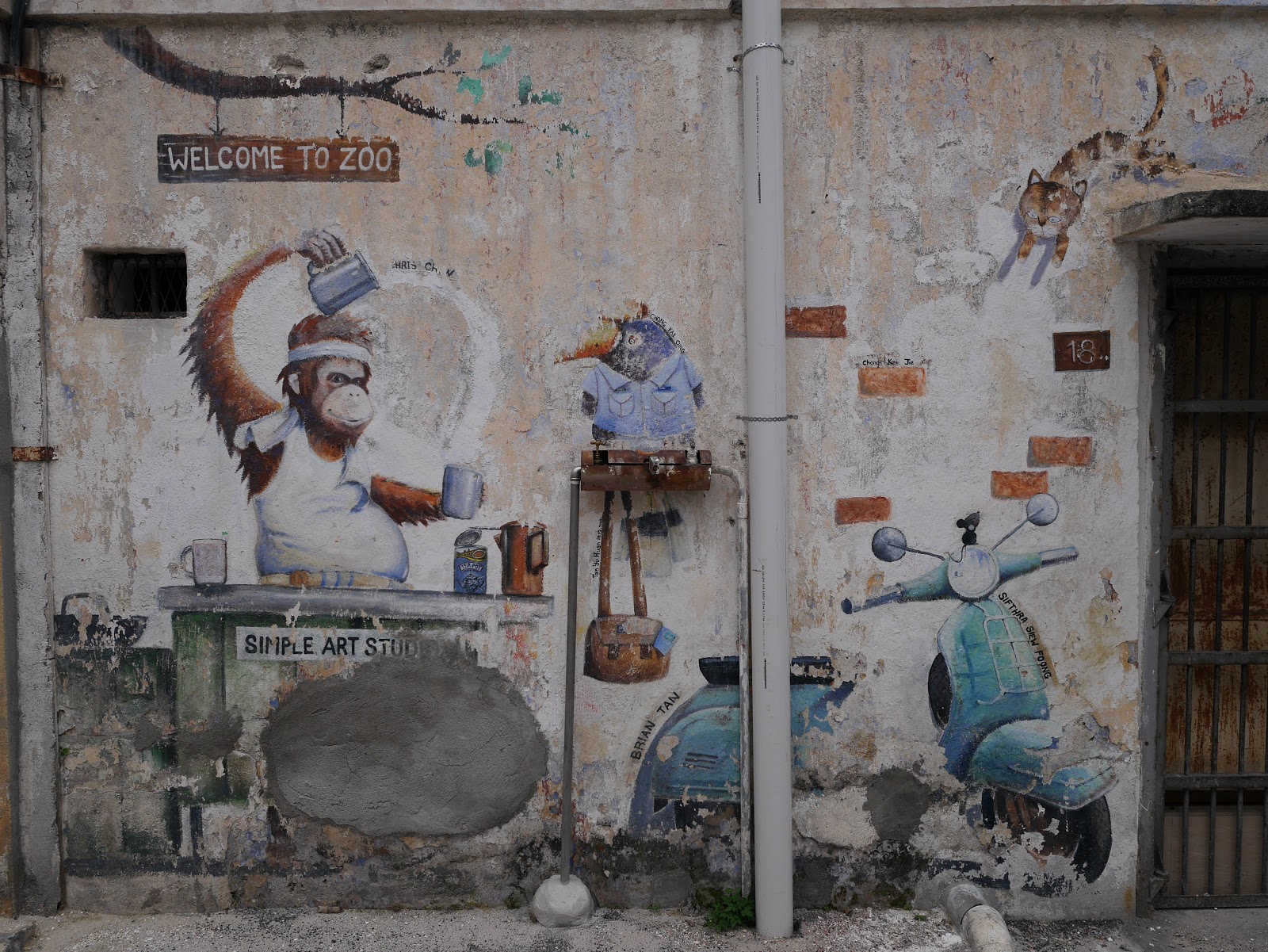Malaysia's coffeehouse culture
I think I get it. A guy opens a coffeehouse, invests in the chairs and tables, hires a staff to wipe 'em down, brew the beans, chat up the customers and generally keep order. But he doesn't stop there. He sets up stalls, in this corner, in that corner, and invites street hawkers to rent them out. One vendor sells only chicken and pork skewers. Another makes only noodle soup, another only caramel custard. A coffeehouse like this in Malaysia is called a kopitiam, and you see the concept fully realized at Restoran Thean Chun at the western terminus of Concubine Lane.
 |
| Clockwise from top left: pork and chicken satay with cucumber chunks, soy sauce with super-hot green peppers, a kopi-C, and peanut sauce. |
It's all pretty confusing for a hungry newcomer, but I learned a lot today through trial and error. Here is how my second visit to Thean Chun would go, and I think this might be helpful to any solo travelers out there: Walk in, stop at the first stall on the right and order the chicken and prawn noodle soup (kasi hor fun) because it will take the longest to make. Then find a table. Good luck with this. I became pretty adept at sitting at other people's tables in Hong Kong, where it's culturally acceptable to do so. You smile, you bow, and you learn that people lie about waiting for non-existent dining partners about to arrive. It's all OK!
When you find a table for yourself, place a non-valuable personal item on it ― a cap, for instance ― to reserve it, and visit the other stalls, placing your orders. No need to point out your location; they are incentivized to find you. Sit back and watch the magic unfold. This doesn't apply to groups, mind you, but we table-for-one guys have got to work harder.
The result is that you will ― at your table ― make about five different payments to people who stop by with your orders.
Keep in mind I've only been here three whole days, but I'm a quick learner. If this post helps just one solo backpacker or middle-aged wanderer, I will be gratified. Enjoy!





Comments
Post a Comment